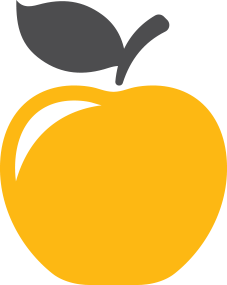Private and Parochial Schools Newsletter May 2016
In this Issue
The Science Behind Speaking Up—Five Ways to Encourage Participation in the Classroom and Beyond
By Dr. David Dockterman, Chief Architect, Learning Sciences, HMH
Originally posted as part of a blog series on The Spark.
Raising your hand in class to ask a question or offer a response to a prompt can be risky business. After all, the teacher might actually call on you. Then what? If you give a correct answer or ask a question everyone else was already dying to know the answer to, you might receive approving nods from the teacher or classmates. But what if you’re wrong or everyone already knew the answer to the question you asked?
This winning approval vs. losing face calculation plays out daily not just in K–12 and college classrooms, but in faculty meetings, business gatherings, and even family reunions. How we think others will perceive us matters because it impacts our status and sense of belonging within a group. As humans, we’re driven to improve our status. Social media leverages this drive for status with metrics about number of friends, followers, or hits, and encourages us to stay engaged to elevate our position in the rankings.
However, studies by behavioral economists suggest that humans are loss averse. While we want to do things to improve our status, we want even more to avoid things that could put that status at risk or lead us to experience loss. This loss aversion helps explain why we hold on to losing stocks while waiting for the share price to bounce back, or why gamblers get caught up in a hopeless cycle of trying to recoup their losses. It even helps explain why high achieving athletes resort to performance enhancing drugs to maintain their identity as stars.
In a similar way students want to look good and win the approval of the teachers and peers they value. But, because humiliation avoidance, or the potential loss of approval, can be an even bigger motivator, many students will choose not to participate. The risk of looking dumb trumps the opportunity to learn. These students stay on the sidelines, as the fear of losing face overwhelms the potential benefit of clarifying a miscomprehension or adding an interesting thought to a conversation.
We need to adjust the factors in their cost-benefit calculation to lower the risk of loss and raise the potential benefit of participation. Here are five ideas for how to make that happen:
- Try before you buy. When students are confident, they’ll be less worried that their answers, thoughts, and questions will sound stupid. To build confidence, let students see how their thinking stacks up against their classmates’ before they reveal their thoughts to the group. By using clickers to poll and display student responses anonymously, for instance, individual students can see how their answers compare to everyone else’s. If a lot of peers agree, they might be more inclined to share their thoughts.
- Low risk trials. Paired or small-group exchanges can take students further than clickers, letting them test out and refine their ideas before sharing with the larger group. Turn-and-talk and think-pair-share routines allow students to articulate their ideas. Just make sure to prep students on how to be good listeners and provide constructive feedback.
- Shared exposure. Enable students to speak on behalf of a group that has already talked through their ideas or questions. Not only does the risk spread across multiple students, everyone receives greater opportunities to participate.
- A Productive Error Climate. A couple of years ago, some researchers in Germany prototyped a framework for measuring what they called the “error climate” of math classrooms, which examines how students feel errors will be treated by the teacher and their peers. If the teacher uses one student’s error to help clarify a misconception shared by many, then there is a common benefit to sharing wrong answers or thinking.
- Learning vs. Performance. Clarify whether the lesson or discussion is part of learning or part of demonstrating mastery. When it’s part of learning, everyone should expect lots of questions and ill-formed thinking. Have an error routine, like “my favorite no”, and offer praise for good questions and strategic efforts. After the content is learned, expectations can shift to right answers, at which point the group should be building confidence.
None of us wants to be embarrassed by appearing incapable in front of our peers or others whose respect we value. Classrooms need to be safe places for students to grow, where the potential benefit of learning something far outweighs the risk of appearing dumb.
|
|
|
Student Engagement Tip from a Parochial School Educator
Submitted by Lorelei B. from Carmel Christian School, Matthews, NC
Lorelei writes:
I like to use hands-on review to help students cement their knowledge. For example, I have used cookies and frosting as a performance assessment. Students had to walk through the steps of aseptic technique in making a streak plate for microbiology using a sugar cookie as the petri dish and a tube of frosting as the needle. This was a perfect example of using all the Multiple Intelligences in one activity. The students were engaged, strived to do it right, and enjoyed the edible end product. When assessing them at the final exam four months later on this technique, they had it in long-term memory and easily recalled it. This activity could be adapted for many concepts including atomic structure, DNA models, fractions in math and many more. This is a great example of connecting the familiar with the unfamiliar in a fun and engaging way.
|
Resources for Private and Parochial Schools
At HMH® we understand the mission and unique needs of Private and Parochial Schools. Our newly released resources page includes articles, customer stories, activities and more.
Explore the site.
|
Professional Learning Corner
From The Teacher Tip, a free app from Heinemann
Honor Students' Natural Curiosities
Adapted from Upstanders by Smokey Daniels and Sara Ahmed.
Mini-inquiries are short investigations of simple topics posed by either kids or teachers. They typically take from a few minutes to one day to complete. They offer kids practice in noticing the fascinating questions that come up, in and out of school, and in forming pairs or teams to seek information about them.
Mini-inquiries often begin spontaneously. A spark of curiosity pops up in class, or some amazing question just jumps out of a kid’s mouth. Sometimes, mini-inquiries can be instigated by the teacher as a way to model and demonstrate the habits of a curious life.
Examples:
Do animals have friendships?
Are dragons real?
When did newspapers begin to print in color?
Why are adults addicted to caffeine?
How many skittles can reach from here to the Moon’s surface?
Try this: When kids come up with questions like these, make time to set aside your teaching agenda. Nothing is more important than honoring and nurturing kids’ curiosity.
Daniels, Harvey "Smokey," and Sara Ahmed. 2014. Upstanders: How to Engage Middle School Hearts and Minds with Inquiry.
|
Provide Independent Reading for All Students
The HMH® Independent Reading Libraries offer a tailored solution providing books at the right levels to make independent reading accessible to all students, building reading stamina and confidence.
- Lexile-based solutions for Grades K–5
- Wide reading resources of just right books
- High-interest fiction and nonfiction titles across a variety of genres and topics
Learn more... |
Featured Grant
NCTE Donald H. Graves Award from National Council of Teachers of English (NCTE) .
The NCTE Donald H. Graves Award for Excellence in the Teaching of Writing was established in 2001 by Donald H. Graves and annually recognizes teachers in Grades K–6 who demonstrate an understanding of student improvement in the teaching of writing.
The purpose of this grant is to provide financial assistance to elementary schools for in-service education in mathematics. Proposals must address the following: need, mathematics content, scope of the plan, other contributing sources of funding, number of teachers and students affected, distribution of costs, urban-rural isolation, and multi-ethnic student body.
Average Amount: $2,000
Deadline to Apply: June 15, 2016
Apply Here!
Find more grants with the Free HMH Grant Database.
|
Upcoming Events
Visit HMH at these upcoming events!
6/9: Arizona Education Summit—Phoenix, AZ |
|
Houghton Mifflin Harcourt™, and HMH® are trademarks or registered trademarks of Houghton Mifflin Harcourt. Twitter® is a registered trademark of Twitter, Inc. Math in Focus® is a registered trademark of Times Publishing Limited. iPad is a trademark of Apple Inc., registered in the U.S. and other countries. |









